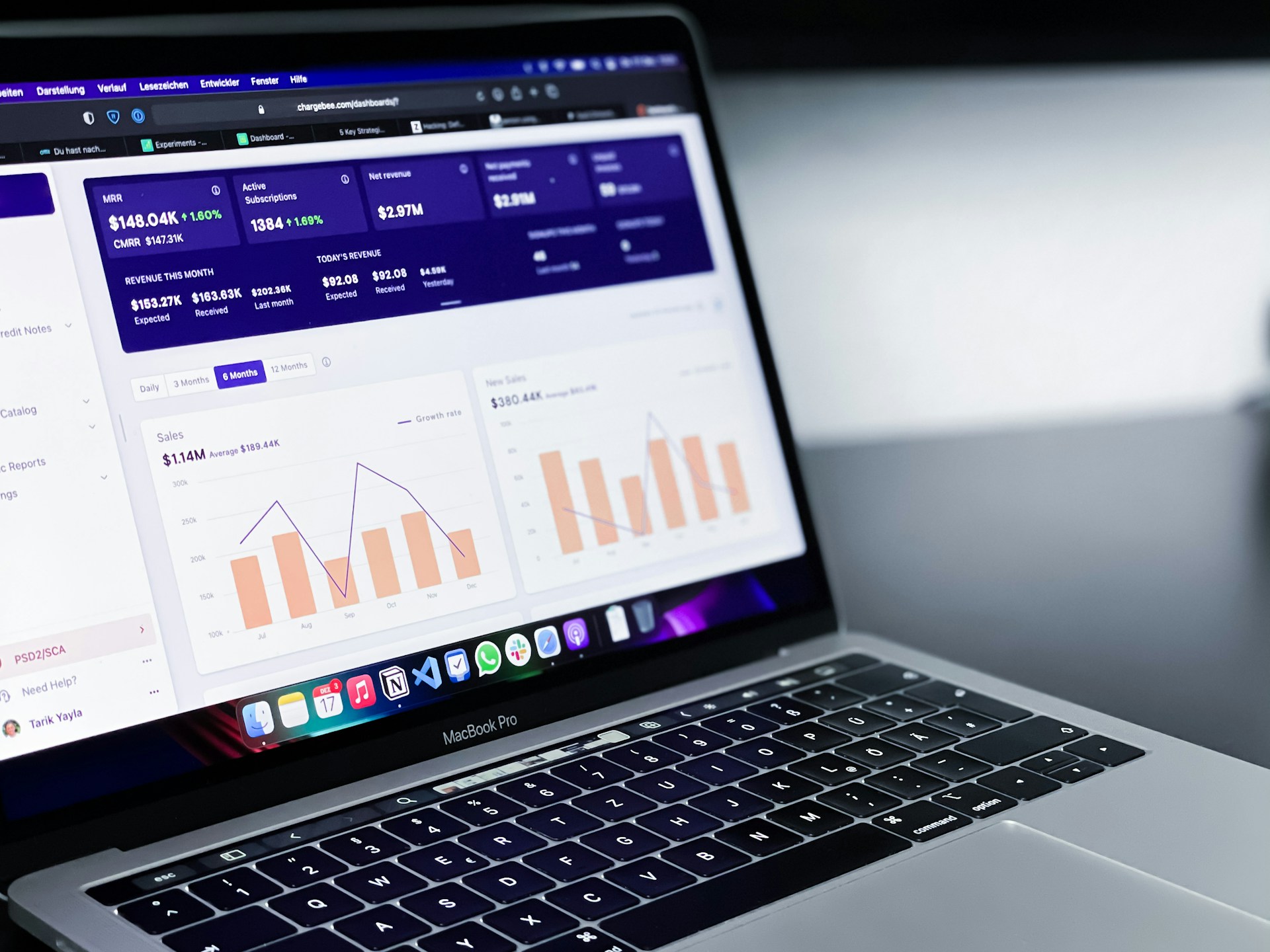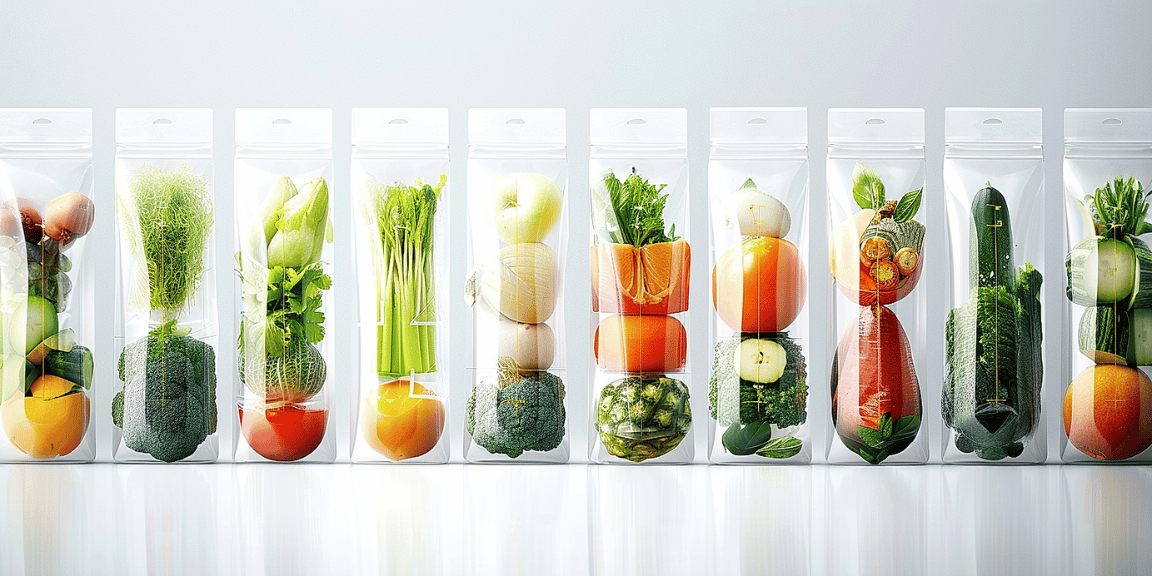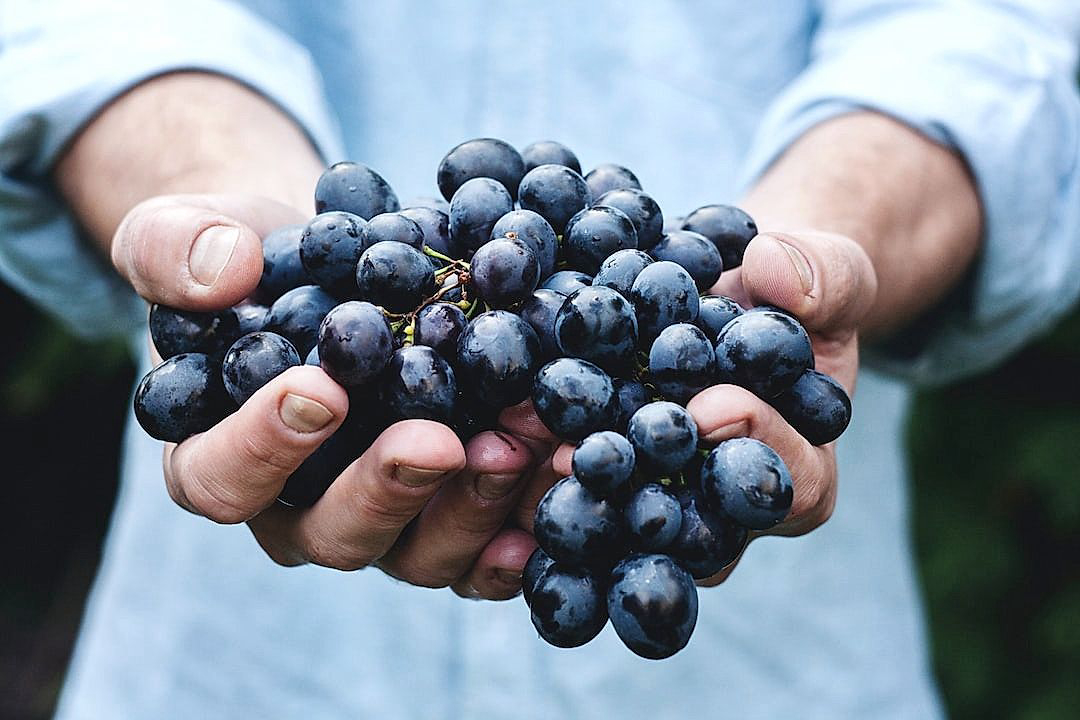The changing face of global economics and the impact of human activity on the world’s ecosystems necessitate a renewed focus on sustainable practices in all sectors, including produce distribution.
As such a crucial component of our everyday life, the way in which we manage the supply chains and logistics operations around produce delivery deserve particular attention.
Trends in this area demonstrate a significant shift towards more environmentally-friendly approaches.
This shift is not just driven by legislation or guidelines, but also by the growing awareness and concern of consumers.
They now demand transparency and responsibility from companies.
Exploring these recent trends provides invaluable insights into the future of the industry.
Contents
- Sustainability Trends In Produce Distribution
- 1. Shifting towards renewable energy in transportation.
- 2. Adoption of reusable packaging strategies
- 3. Prioritizing Local Sourcing to Reduce Carbon Footprint
- 4. Encouraging organic farming to save biodiversity.
- 5. Implementing Zero-Waste Policies in Operations
- 6. Increased use of IoT in supply chain management.
- 7. Scaling up of vertical and urban farming
- The Bottom Line
Sustainability Trends In Produce Distribution
1. Shifting towards renewable energy in transportation.
The global produce distribution industry has a significant role to play in the shift towards cleaner, sustainable ways of doing business.
One of the primary ways this shift is taking place is through the increased use of renewable energy sources in transportation.
Transportation, especially long-distance haulage, has long been a major contributor to greenhouse gas emissions and broader environmental degradation.
The reliance on fossil fuels has been an accepted part of doing business, but this is changing.
There is now a growing understanding of the environmental costs associated with conventional transportation methods, and businesses are being pushed to find sustainable alternatives.
The use of renewable energy in transportation is not just a theoretical concept – it is a practical solution that is already being adopted by forward-thinking companies around the world.
For example, electric vehicles (EVs) are becoming increasingly popular.
Battery technology is progressively better and more affordable, making EVs a viable option not just for personal transportation, but also for commercial fleets.
Similarly, the use of biofuels, derived from renewable resources like plants and waste biomass, is gaining traction.
Biofuels are a promising alternative to traditional diesel for trucks, and the technology is quickly maturing.
Beyond these direct solutions, other strategies are also being explored.
For instance, optimizing transportation routes and schedules can significantly reduce fuel consumption and emissions.
The ultimate aim is a shift towards entirely carbon-neutral transportation systems.
While the technology and infrastructure required for this are still being developed, the commitment to this goal is critical.
Holistic approaches that combine renewable energy, energy-efficient vehicles, and optimized logistics could be the key to making this a reality.
While some challenges remain, the shift towards renewable energy in transportation is an encouraging trend.
2. Adoption of reusable packaging strategies
The produce distribution industry is turning towards more sustainable practices, one of which is the adoption of reusable packaging strategies.
These efforts are not limited to the replacement of single-use plastics with recyclable materials but also incorporate a radical rethinking of product design and delivery.
Reusable packaging solutions can align with consumer demands for environmentally friendly products, thus driving business growth and contributing to sustainability.
With increasing amounts of packaging waste ending up in landfills and oceans, implementing reusable packaging is an urgent priority.
The transition to reusable packaging not only minimises production waste but also reduces the environmental impact of logistics and distribution.
Furthermore, companies can reduce costs by decreasing the need for producing new packaging materials and managing waste disposal.
Reuse models, where packages are collected back from consumers for cleaning and refilling, are gaining momentum.
New technologies such as intelligent packaging systems and sorting innovations are also being developed to facilitate safe and efficient reuse.
However, large-scale adoption of reusable packaging requires not only technological advancements but also regulatory support, strong risk management measures, and a significant shift in consumer behavior.
Advocacy campaigns promoting the benefits of reusable packaging, stringent pollution regulations, and incentives for businesses to adopt reusable packaging strategies are also crucial enablers.
These steps can help overcome barriers to adoption, such as the perceived inconvenience of reusable packaging and the problem of littering behavior.
Moreover, by creating closed-loop systems for reusable packaging, companies can achieve a cost-effective supply chain and enhance their brand’s reputation for eco-friendliness.
The potential of reusable packaging strategies in transforming the produce distribution industry is substantial, but it requires committed, coordinated efforts to make a significant impact.
With increasing pressure from consumers, environmental activists, and progressive regulators, there is a growing consensus that the shift to reusable packaging is inevitable and urgent.
In return, companies that respond swiftly and proactively to this trend will not only make a significant contribution to environmental protection but also build strong customer loyalty and competitive advantage.
3. Prioritizing Local Sourcing to Reduce Carbon Footprint
In the drive towards sustainability, one of the most significant trends is the prioritization of local sourcing. This approach not only supports local economies but also significantly contributes to the reduction of carbon footprint involved in produce distribution.
The role of transportation in distribution is pivotal and its impact on carbon emissions is profound. Local sourcing reduces the transportation distance, which in turn decreases the carbon emissions associated with it.
Moreover, local sourcing eliminates the chances of transcontinental shipping which has a harsh environmental impact due to the use of huge amounts of fossil fuels.
Local sourcing can also ensure better quality of produce. Since the produce has less distance to travel, it remains fresh longer.
The shorter timeframe between harvesting and distribution when sourcing locally helps to maintain the nutritional value of the produce, ensuring healthier choices for the consumers.
The process of local sourcing encourages agricultural diversity. This happens as local farmers get motivated and get the opportunity to grow a variety of crops.
Often in stark contrast to large scale farming where a single crop is grown excessively, local sourcing promotes crop rotation, thus leading to better soil health.
Interestingly, local sourcing has another advantage. It promotes transparency and traceability. Consumers are increasingly inclined towards knowing where their food comes from.
When produce is sourced locally, it’s easier for both consumers and distribution companies to trace the origins of the produce. This adds to the credibility of the producer.
Knowing that the products they consume are locally sourced can give consumers a sense of contributing towards sustainability.
Local sourcing can positively impact the job market by promoting local economies. It provides consumers the satisfaction of supporting local businesses.
It’s worth noting that local sourcing is consumer-driven. The growing trend of making sustainable choices is encouraging more companies to source locally.
Sourcing locally is not always feasible, especially for large companies, it’s a trend that’s catching up fast.
Many businesses are now making concerted efforts to increase the percentage of their produce that is locally sourced, indicative of an upward trend in this sustainability approach.
It’s not just about the environment or economy alone, local sourcing is increasingly seen as an ethical choice.
If companies continue this trend of local sourcing, it will significantly contribute to the reduction of global carbon footprint and drive the sustainability movement forward.
4. Encouraging organic farming to save biodiversity.
As the trend towards greater sustainability continues, encouraging organic farming to save biodiversity is emerging as a key strategy within the produce distribution industry.
Organic farming practices, by definition, eschew the use of harmful pesticides, synthetic fertilizers, and genetically modified organisms (GMOs).
This results in a safer, more diverse ecosystem less prone to the damaging effects of industrial farming practices, thereby aiding in biodiversity conservation.
Organic farming encourages the natural turnover of organisms in the soil, fostering a diverse and vibrant ecosystem that is conducive to sustainable produce distribution.
Moreover, these farming practices promote the health and longevity of soil and water resources, which are vital for sustainable agriculture and food production.
But promoting organic farming is not just about protecting our environment and resources; it also plays a significant role in economic sustainability.
Organic produce typically demands a higher market price, providing a profitable alternative for farmers and companies committed to sustainable practices.
And with increasing consumer awareness and demand for organic, ethically-sourced produce, there is a clear market incentive for distributors to prioritize organic farming strategies.
In this way, encouraging organic farming helps to reconcile environmental concerns with the need for viable economic growth and development within the produce distribution industry.
Yet, despite these benefits, there may be challenges and barriers that could impede the adoption and scaling of organic farming.
These can include higher production costs, the need for new farming skills and knowledge, and potential barriers to market entry for organic produce.
However, through initiatives such as capacity-building programs, financial incentives, and public awareness campaigns, these challenges can be addressed and overcome.
Therefore, while not without its challenges, the trend towards organic farming carries a wealth of opportunities for promoting sustainability in the produce distribution sector.
Ultimately, by fostering a healthier ecosystem and creating market demand for sustainable produce, encouraging organic farming can play a pivotal role in shaping a more sustainable and biodiverse future for the entire industry.
5. Implementing Zero-Waste Policies in Operations
The global shift towards sustainability has been well received in various sectors, more so in the produce distribution industry.
The implementation of zero-waste policies has become a significant trend to reduce waste and promote sustainable development.
Produce distributors worldwide are exploring viable waste management strategies to keep up with these trends, in addition to adhering to the increasing waste management regulations and societal expectations.
By implementing zero-waste policies, the produce distribution sector is addressing a critical global issue – waste management, while improving its sustainability performance.
This approach encompasses a diverse range of practices, aimed at eliminating waste, rather than just managing it.
Some of these practices include reducing packaging, reuse, recycling, and creating a closed-loop system where waste is viewed as a resource instead.
For instance, many companies in the industry are implementing reusable and recyclable packaging solutions as part of a zero-waste policy.
The use of empty space optimization techniques in packaging, transportation, and storage also plays a crucial role in minimizing waste.
Furthermore, the introduction of composting programs within many of these companies is promoting the conversion of organic waste into valuable compost.
Technological advancements also aid in the successful implementation of zero-waste strategies.
Digital tools for inventory management have been pivotal in preventing food waste through efficient tracking and redistribution of produce.
However, it’s crucial to acknowledge that implementing zero-waste policies is a gradual process that requires commitment, time, and resources.
As such, effective implementation of zero-waste policies in operations requires thorough planning, employee training, and continuous assessment to ensure its success.
Increasing consumer awareness and demand for sustainable products are also propelling produce distributors to establish and adhere to zero-waste policies.
Ultimately, the goal is to create a sustainable supply chain network for the agricultural sector, that is not only beneficial to the environment, but also economically viable for the stakeholders involved.
6. Increased use of IoT in supply chain management.
The concept of distribution is incomplete without the mention of supply chain management.
Incorporating sustainability within this domain is closely linked with the increased use of the Internet of Things (IoT).
IoT devices can monitor and streamline every part of the supply chain, thereby ensuring efficient use of resources.
For instance, IoT sensors can be used to measure temperature, humidity, light, and many other factors that play an essential role in maintaining the freshness of produce.
This leads to reduced wastage and ultimately contributes to the overall sustainability of the operations.
Interconnecting all the parts of the supply chain with IoT not only ensures timely delivery of fresh produce but also contributes towards sustainability.
Moreover, the use of IoT in transportation can monitor the level of fuel consumption and route optimization for delivery trucks.
This helps in cutting down the transportation costs and the amount of greenhouse gas emissions.
IoT devices can track and monitor the progress of agricultural produce right from farming to the retail outlets.
This greatly increases the level of transparency in the supply chain and helps to maintain high food safety standards.
Increased usage of IoT can also lead to automated decision-making.
For example, smart sensors can notify when a refrigeration unit is malfunctioning, and the system can place a service request automatically.
One of the major advantages of IoT in supply chain management is the huge amount of data it provides which can be used to predict market trends, plan for demand, and optimize the inventory.
This kind of predictive analysis aids in improving efficiency and drives the sustainability goals of produce distribution.
All these examples illustrate how IoT technology can truly redefine the produce distribution landscape and make it more sustainable.
Overall, the increased use of IoT considerably strengthens the sustainability of produce distribution, playing a major role in reducing unnecessary waste, optimizing resource use, and improving the efficiency of operations.
7. Scaling up of vertical and urban farming
Vertical and urban farming is increasing in popularity as a potential solution to the sustainability challenges posed by traditional agricultural practices.
These innovative farming models aim to minimize land usage while maximizing crop production.
The utilization of urban spaces, such as rooftops and vacant buildings, for farming represents a significant shift in the way we perceive and utilize our urban environments.
This approach not only contributes to food security but also promotes resource utilization efficiency.
It is a viable alternative to traditional farming, and its implementation aligns with the global sustainability trend.
In comparison with conventional farming, vertical farming uses 70% less water and recycles waste more efficiently.
Implementing vertical and urban farming on a larger scale can significantly reduce the supply chain miles, thereby reducing carbon emissions associated with produce distribution.
Farming closer to consumption points effectively shortens food supply chains.
This not only reduces carbon emissions but also promises fresher produce and presents opportunities for local job creation.
By adopting this way of farming, distributors are able to ensure better quality control and can reduce waste in the distribution process.
Furthermore, vertical and urban farming practices are adaptable to climate changes.
They can operate year-round without the limitations of seasons or weather patterns – an advantage that is not present in traditional field farming.
This, in turn, provides for a more reliable supply of produce throughout the year.
Besides the obvious sustainability benefits, vertical and urban farming also contribute toward urban regeneration.
They revitalize unused urban spaces and can add aesthetic and social value to neighborhoods – things that go beyond the initial objective of food production.
Moreover, these urban farms can work as educational centers for urban dwellers, adding another layer of societal benefits.
In light of these benefits, the upscaling of urban and vertical farms has become a trend in sustainable agriculture and is setting new standards for produce distribution.
The Bottom Line
It is apparent that the transition to a sustainable business model is not just a fleeting trend, but a critical and immediate need.
Shifting towards renewable energy in transportation, adopting reusable packaging strategies, and prioritizing local sourcing are all actionable steps to reducing carbon footprint.
Similarly, by encouraging organic farming, businesses not only contribute to saving biodiversity but also promote healthier food alternatives.
Implementing zero-waste policies in operations directly corresponds to a cleaner environment, while the increased use of IoT in supply chain management enhances efficiency while reducing waste.
Lastly, the scaling up of vertical and urban farming boosts local economies and reduces the need for long-distance food transport.
Indeed, these transformations, while challenging, unlock new opportunities for businesses to thrive in an increasingly conscious consumer market while making notable contributions to restoring our planet’s health.




